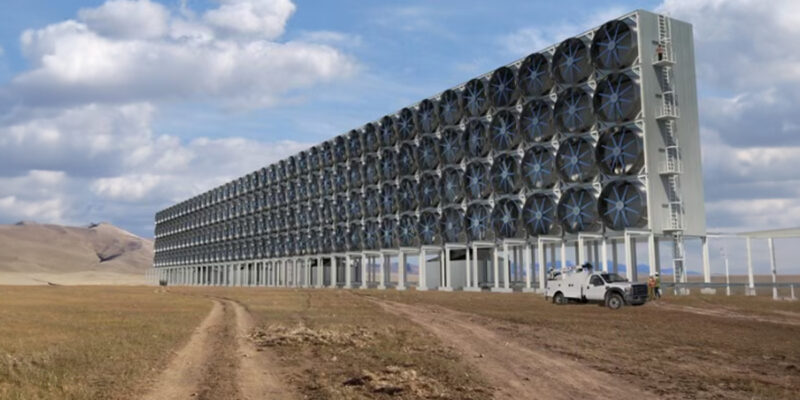A few days ago, I was inspired by Florida Governor Ron DeSantis calling out elected officials for wasting time on considering capturing and sequestering carbon below the feet of citizens in the Sunshine State. I’m glad to hear Governor DeSantis call out this insanity. His important statement follows South Dakota’s actions of a few weeks earlier when they made it illegal to impose eminent domain takings when pipelines contain captured carbon. I’ve been doing my best here in Louisiana to relay my concerns with the whole concept. DeSantis’ words and the boldness of South Dakota have inspired me to offer up some more thoughts here in Louisiana.
As we continue to explore the bizarre world of carbon capture and sequestration (CCS), I think it is time to address one component of the CCS paradigm that is encroaching on our citizens and our communities and stands to act as an enabler to the madness of the first step of CCS—CAPTURING.
Let’s all remember that part of the CCS business is tied to catching small elements of so-called pollutants coming off our oil and gas extraction or production locations. That’s dumb enough, considering our oil and gas production is just about the cleanest in the industrialized world. But the people behind this say we need to do it to try and confront climate change—also a dumb idea, but at least it’s rooted in something you can see. You might see something coming off a gas well.
The other side to this coin is the act of capturing carbon directly out of the air.
Not off an oil and gas well, but out of the air.
Directly.
Somewhere along the line in (probably) a hard left think tank, some group of Mensa’s came up with the bright idea of “direct air capture” or DAC. These folks believe that as a part of America’s effort to confront manmade climate change, we need to extract MORE than just nominal pollution—we need to find clean air and then CAPTURE it and send it down a pipe and stuff it in the ground somewhere.
Yes, there REALLY are people who want to do this. Bewildering, right?
Let’s address why this activity is dumb as a barrel of hair. A DAC activity comes with a big machine that supposedly sucks carbon into a capture point. DAC requires significant energy. For example, one of these apparatus’ uses 1,800–2,400 kWh per ton of carbon dioxide (CO2) captured (Environmental Science & Technology, 2021). This energy demand often exceeds what renewables can currently supply at scale, likely relying on fossil fuels that we might be selling on the open market. This is wasteful and NOT “sustainable”. So, we’re burning up more energy and probably producing more carbon so we can catch carbon we can’t see. Got it?
Some say Louisiana ought to be embracing this technology because of geological suitability and safety. The truth is the safety and permanence of CO2 storage are not as assured at all.
Let’s talk first about leaks: Studies such as the one cited in Geophysical Research Letters in 2019 show that saline aquifers, common in Louisiana, can leak CO2 over time due to faults or well failures—up to 1% annually in worst-case scenarios. Further, the fact that we have had a LOT of old wells drilled in Louisiana and the fact that there is NO good ground truth (no pun intended) regarding what goes on below our feet raise concern. There are absolute risks to groundwater contamination that must be considered.
Our state’s proximity to fault zones (e.g., Gulf Coast tectonics) increases injection-induced seismicity risks, as seen in Texas and Oklahoma (Science, 2016). We are in a spot in Western Louisiana that should raise concerns.
The geological suitability for carbon in Louisiana is blown out of proportion—especially in certain parts of Louisiana. Safety is not guaranteed without rigorous, site-specific monitoring, which will add to costs and complexity of some of the envisioned projects.
Finally, the idea that direct air capture projects tap into a “growing global carbon economy” borders on the absurd. While there may be people and organizations that would love to force this stuff to happen, our last article refuted the idea that there is a demand in a market. The markets DO NOT CARE. The global demand for DAC-captured CO2 is speculative and overstated. While there is talk of aviation and maritime industries supposedly desiring for DAC-derived fuels, there is no push behind it. Even if there were, why bury the carbon—why not use it?
People supporting this insanity say that DAC hubs will “combine advanced technology” and “world-class expertise” for seamless carbon dioxide removal and storage.
The truth is, DAC’s technical and cost barriers are significant and downplayed.
Current DAC technologies capture CO2 at low atmospheric concentrations (0.041%), requiring vast infrastructure. The process, for instance, needs kilns and long carbonation cycles, limiting production capacities (Energy & Environmental Science, 2022), leading the astute and even casual observer to ask “what’s the point?”
The people trying to make CCS work are relying on federal subsidies to get this technology rolling. DAC costs far exceed alternatives like reforestation ($10–$50/ton) or point-source capture ($50–$100/ton). Some of the ones earmarked for Louisiana will need billions in investment which may not yield proportional CO2 removal without massive scaling, risking economic inefficiency.
Hanging on to the hope that CCS will bring money to Louisiana is like the makers of the Edsel hoping their car will sell. There is no demand. It’s probably not safe. It’s not necessary.
Chuck Owen is a State Legislator. His home parish of Vernon has had 250,000 acres of land taken for eminent domain for the greater good of the nation. He is a second term legislator and he is not amused with the fraud of sequestering carbon.
Advertisement
Advertisement

